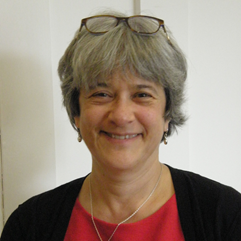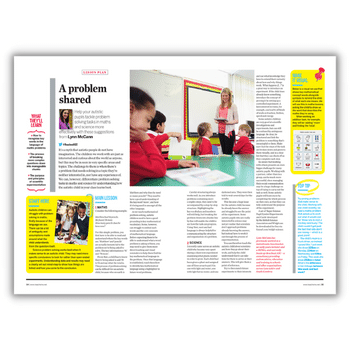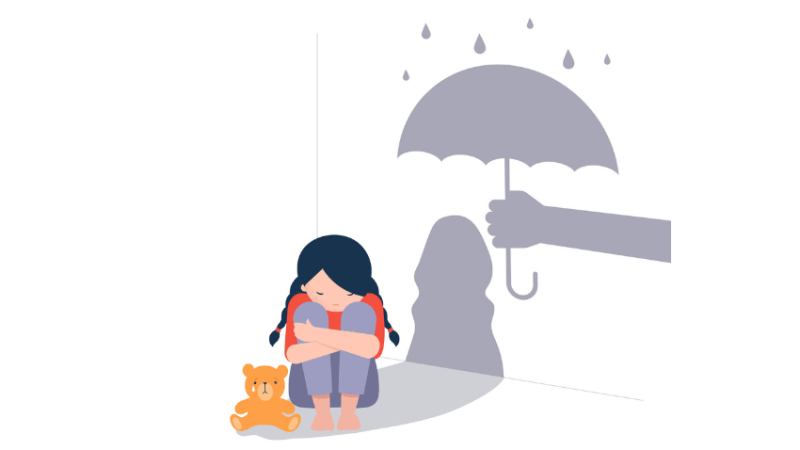Special needs – On the search for a SEN label

The search for a SEN label can obscure children’s needs and inhibit teachers’ abilities to meet them, says Sara Alston…

- by Sara Alston

Faced with a child with learning or social interaction difficulties, parents and staff usually want to know what their diagnosis is.
There’s a feeling that if we can answer this question, we can reduce, explain or excuse the difficulty. However, in reality, a diagnosis changes little.
The child whose poor understanding of social communication means that they struggle to understand that they are being rude to people will continue to behave in this way even after receiving a diagnosis of autism.
What may make a difference is the support they receive.
In schools, we cannot ignore children’s needs because they do not have a diagnosis, nor should we provide children with additional support they don’t need just because they do have one.
There are many children on my SEND register who do not have or need a diagnosis.
Equally, we have children throughout the school who have diagnoses of different kinds, but are not on the SEND register because their needs can be met through quality first teaching.
There’s a real risk that the search for a label can obscure the child’s needs and inhibit our ability to meet them.
Diagnosis signpost
In my area, the waiting time for a CAMHS appointment for a diagnosis of ASD or ADHD is between 12 and 18 months, though there are cases of parents paying for almost-instant diagnosis. Whatever the diagnostic path, we need to continue to support children during this time and hope our work feeds into the diagnostic process.
For many pupils, a diagnosis is seen as the answer to their difficulties. While it can indeed act as a signpost, it doesn’t provide details of the support and adjustments the child needs to learn and be happy in school.
A diagnostic label can be restrictive, leading to assumptions about a child, such as the idea that all children with a label of ASD have the same needs. We know that this isn’t true. These diagnoses are on a continuum but the stereotypes tend to focus on the extremes.
Those with ASD are seen as anti-social geniuses and ‘Rain Man’ type savants, or locked-in non-verbal ‘head bangers’. The truth, for most people, is somewhere in between, but this is too often lost in the focus on the diagnostic label.
The diagnosis implies that the child displays evidence of the triad of impairments associated with autism, but the balance and impact of these will vary from individual to individual and our response needs to match those strengths and difficulties, rather than be a generic response to the label.
Same or different
Confusingly, while many children given the same diagnosis present with different needs in the classroom, pupils with different diagnoses may present with similar needs.
Difficulties with focus, sensory overload, word finding and low self-esteem can be characteristic for those with ASD, ADHD and dyslexia or a combination of these difficulties.
There is a risk that the label overwhelms our knowledge of the individual and so we direct our support to meet the descriptor of the difficulty, rather than the individual’s needs. Children are not robots to be fitted into neat diagnostic boxes.
They produce a range of signs, symptoms and indicators which may reflect different educational needs or diagnoses, but also will be influenced by their personality, experiences and environment, as well as their age, stage and gender.
Whatever the cause, schools need to respond to the needs and support the child to be able to learn and engage in school.
Right direction
These issues are compounded as many teachers feel that they lack expertise. There’s a feeling that once a child is given a diagnosis, we need to change everything; we should do something that will suddenly make the learning easier for the child. The diagnosis is seen as a magic answer, but it’s not.
It’s simply a step in the right direction. For many parents, and some professionals, there’s a belief or hope that from a diagnosis will grow the cure; that somehow it will solve and/or excuse any difficulties.
For some, it may even excuse inaction – they feel there’s ‘nothing that can be done’, so there’s no need to try to improve conditions for the child or promote their learning.
In my view, there are three reasons for a school to support seeking a diagnosis for a child:
- To access funding
- To give you direction in understanding and helping a child and their needs because, despite your efforts, this isn’t known
- Most importantly, to support the child’s self-esteem by providing an explanation of their difficulties which they themselves can understand, or to support parents to understand that there are issues with their child beyond their parenting
Yet too often a diagnosis becomes a label, causing us to lose sight of the child. I should be clear that I’m not against diagnoses of special educational needs. In fact, I benefited from a diagnosis of dyslexia.
It enabled my parents, teachers and me to understand that there was a reason for my significant difficulties with reading and writing and that it was not just that I was lazy and/or stupid. But that alone was not enough to make the difference to my educational future.
It required a focused response that considered my particular needs, not all of which fit the standardised descriptors of dyslexia.
Teachers need the support and confidence to move beyond the label and see the whole child, including both their strengths and their barriers to learning, so that they are best able to support them.
An overemphasis on ‘labels’ can inhibit this, obscure a child’s needs from view and block them and their teachers from gaining the right support.
Sara Alston is an independent consultant, trainer and practising SENCo. Her new book, co-authored with Daniel Sobel, is called The Inclusive Classroom: A New Approach to Differentiation (Bloomsbury).
Find her on Twitter at @seainclusion and visit her website at seainclusion.co.uk.
Browse more resources for Autism Acceptance Week, including our autism in girls checklist.











